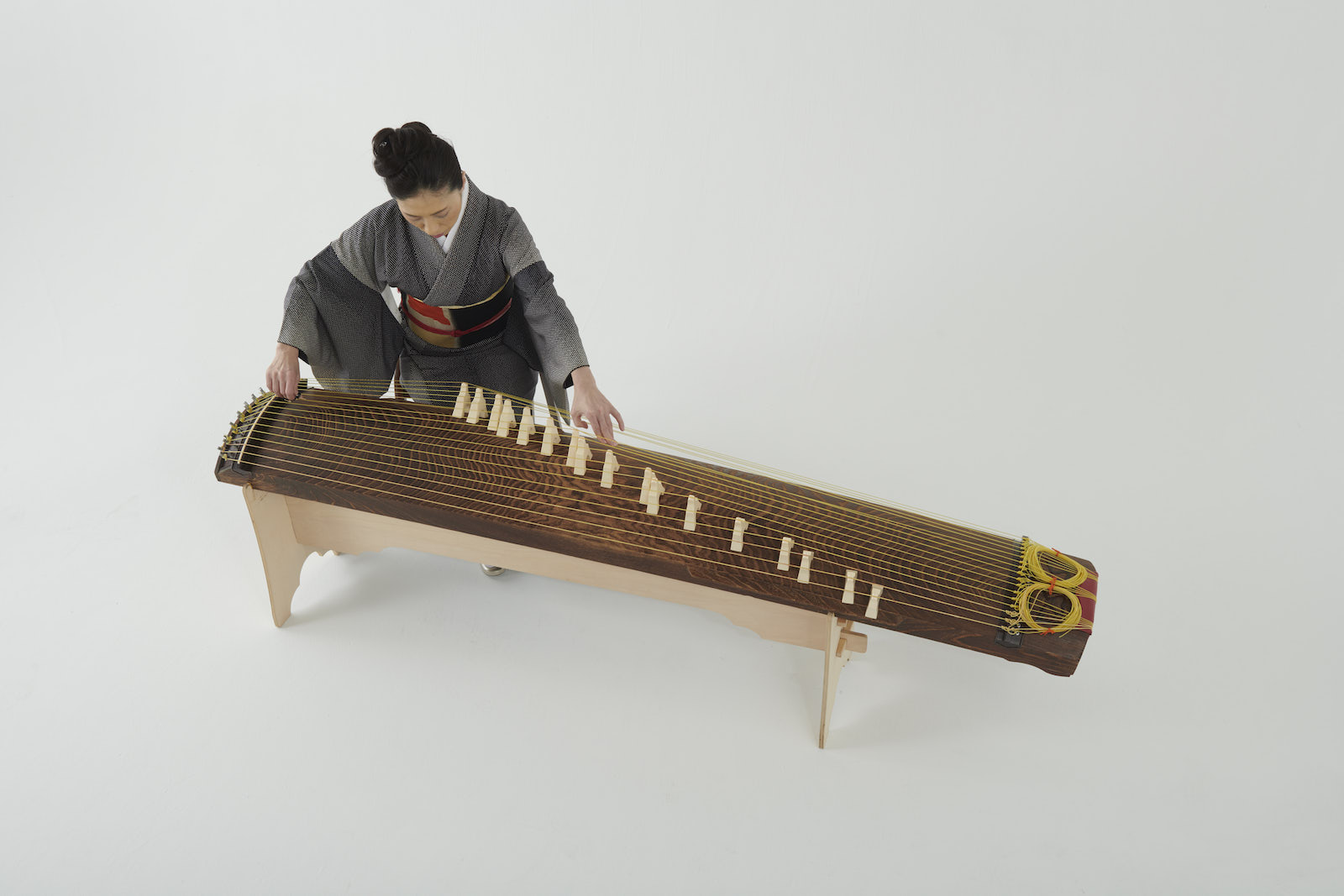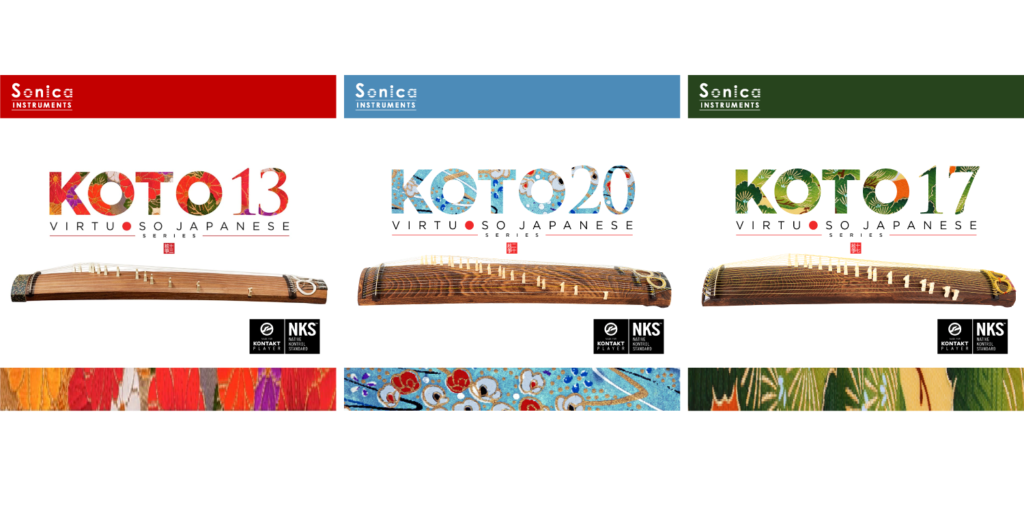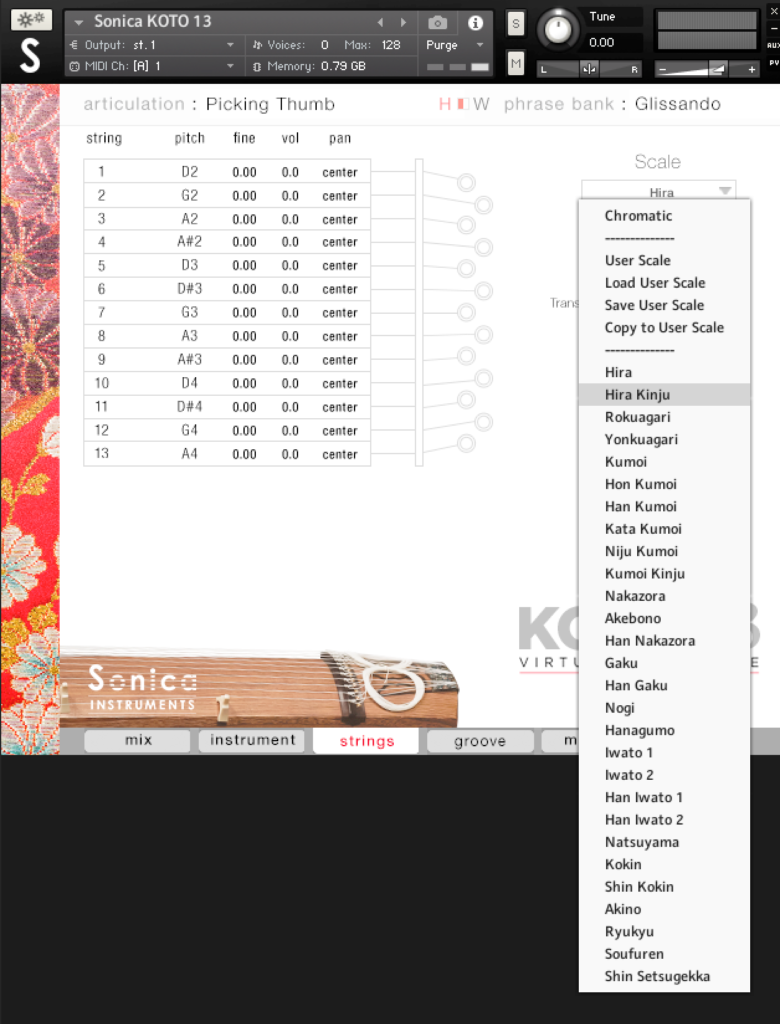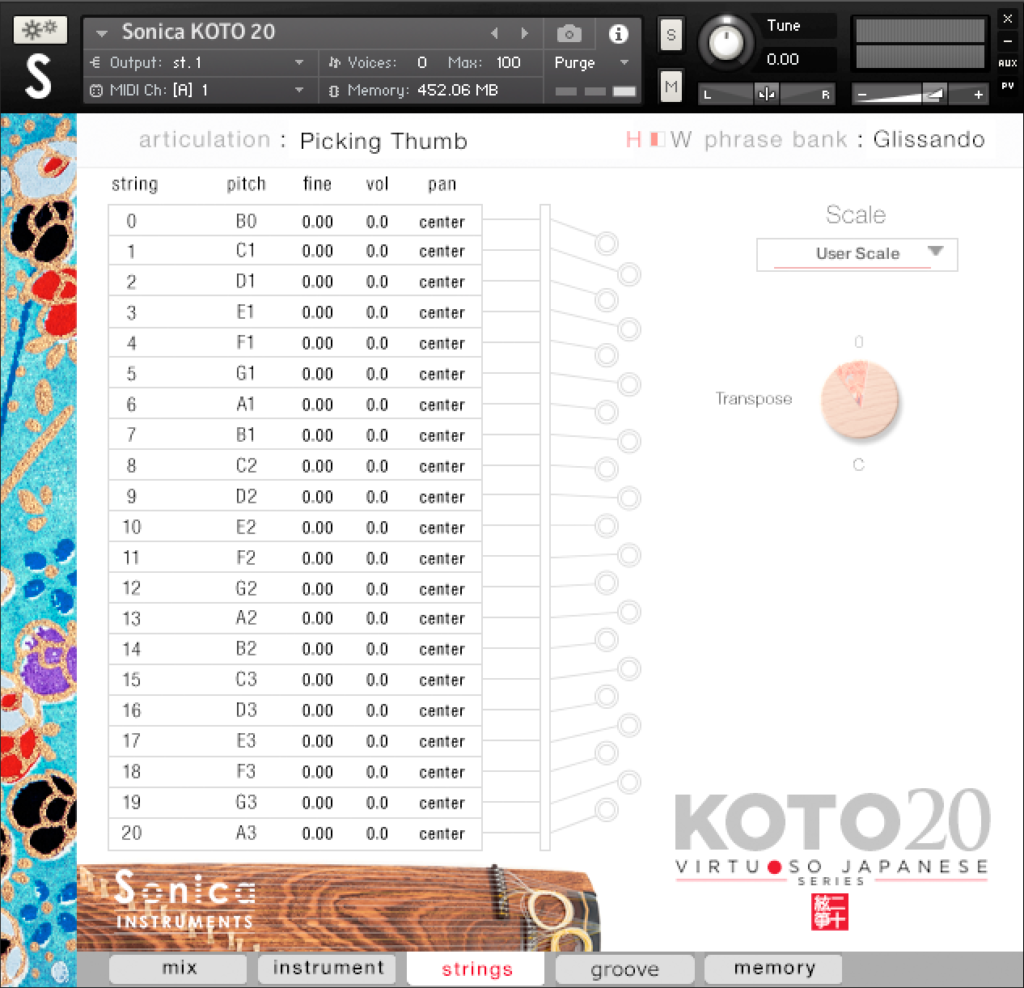
Three Koto Libraries, Three Distinct Voices and Musical Roles
We’re back with more tips on how to get the most out of Sonica Instruments’ libraries. This time we’ll look at the differences between our three koto packs and what musical context each excels in.
We offer three koto titles — KOTO 13 Version 2, KOTO 20, and KOTO 17 — so it’s not surprising that people often ask us: “Which one should I choose?” The short answer is: “It depends”. The longer, and more interesting, answer delves into the history of the three koto instruments and how their traditional musical roles can provide hints on how to use them today.
Technique flows from form
Unlike most guitars and basses, the koto is fretless and each string can only produce one pitch. In effect, the number of strings limits how many different note choices the performer has. Performers have gotten around this by developing creative techniques like shifting the moveable bridges along the neck or pressing strings behind the bridges with their left hand to bend the pitch.
Indeed, it is the moveable bridges, known as ji, that set the koto apart from other zither instruments. The movable bridges support the strings and allow the performer to adjust the string to achieve any tuning they like.

Classical period and a radical departure
The koto was introduced to Japan sometime in the 8th century during the Nara Period. For over a millennium, the instrument was primarily reserved for aristocrats to perform gagaku (court music). But radical changes in form and technique began to appear at the turn of the 17th century.
A key innovator was Yatsuhashi Kengyo, a blind musician from Kyoto. Eschewing traditional tunings, he often used the pentatonic miyako-bushi scale and established the danmono form of composition for the koto. He composed many pieces for the instrument and is even credited with writing “Rokudan no Shirabe”, one of the most well-known koto pieces.
He was followed by Ikuta Kengyo and Yamada Kengyo who further refined the modern koto instrument and its music.
New koto designs emerge, bringing new possibilities
The 17-string koto and 20-string koto were not developed until the early 20th century. Prior to this, nearly all koto had just 13 strings. But as the modern era ushered in more diverse forms of music and performance, the koto evolved and adapted.
The 17-string koto was devised by Michio Miyagi, famed for “Haru no Umi”, a piece often played during the New Year season. By adding strings and extending the lower register, Miyagi intended the instrument provide bass accompaniment in ensemble performances, much like the cello to the violin. Today it has become a solo instrument in its own right. In keeping with its deeper sound, the 17-string koto is slightly larger than a typical koto with thicker strings and played with a heavier pick.
The 20-string koto was created by the koto player Keiko Nosaka and the composer Minoru Miki. The instrument was originally strung with 20 strings, as its name suggests, but with later improvements, it now normally sports 21 strings. The 20-string koto’s register extends both above and below that of the 13-string koto. The wider tonal range makes the 20-string koto well suited for contemporary music.
Seeking to push musical boundaries, people have developed many koto designs, including some with 25 or 30 strings and even as many as 80 strings!
This is just a cursory peek at the koto’s long and colorful history. It is definitely worth looking into if you are at all interested.
Hear the different voices for yourself

Let’s have a listen to the three libraries to get a sense of the instruments’ distinct characters. Obviously, the number of strings makes a difference, but the biggest sonic differences are in their tones. We made a short passage and played it with each of the libraries so you can listen and compare for yourself.
KOTO 13 Version 2
KOTO 13 is distinguished by its elegant and refined character. This library contains the typical sounds many imagine when they think of the koto.
KOTO 17
KOTO 17’s charm lies in its deep, rich sound, hitting the lowest note (G0) of the entire KOTO series. Equally adept at tender passages and bombastic runs, this pack is unparalleled when you want to add a low punch to a composition or when you want a solo instrument with a meaty presence.
KOTO 20
Boasting the widest register in the series, KOTO 20 gives you all the atmosphere of the koto along with exotic oriental overtones. Perfect for contemporary music, it adds surprising character when used in place of a harp.
Tuning differences
All three libraries assign strings to adjacent white keys, making it easy to perform the glissandos and nuances that only a koto can do. When it comes to tunings however, KOTO 13 Version 2 takes a different approach from KOTO 17 and KOTO 20.
KOTO 13 has 28 preset traditional scales that have been played since antiquity. The default scale when the library loads, for example, is the hira scale, the most fundamental koto tuning.

KOTO 17 and KOTO 20, on the other hand, come with Western scales and modes like Ionian and Natural Minor, instead of classic scales, as these instruments are generally tuned to diatonic scales.

In practice, a koto’s tuning is frequently adjusted in a performance to match particular pieces. To reproduce this flexibility, the KOTO libraries include recallable user scales that allow individual string tunings. And the chromatic mode lets you play the keyboard without having to think about strings or tunings at all. Ultimately, you can perform the same scales on all titles.

Due to the inherent differences between the three instruments, even if you play the same note from the same scale, the resulting tone and impression will be noticeably different.
Back to the beginning
Despite the meandering of this post, the answer to which koto library to pick is actually quite simple: “What kind of sound are you looking for?” Just as you choose between a violin and a cello or between a soprano sax and an alto sax, you can mix and match the three koto versions in different ways depending on the sound and feel you want.
The libraries are available individually or as the KOTO Three Sisters bundle, which gets you all three titles at a discount. Definitely listen to the demo tracks and imagine which voice will pair the best with your next project.
